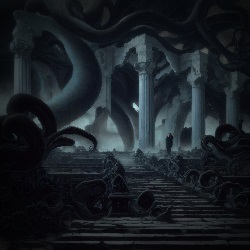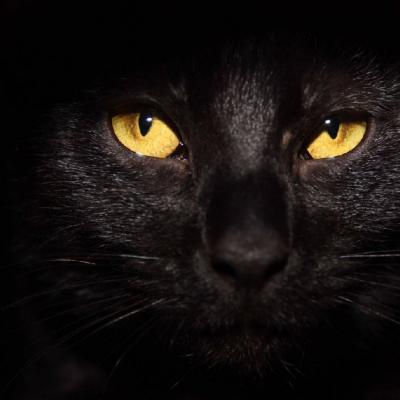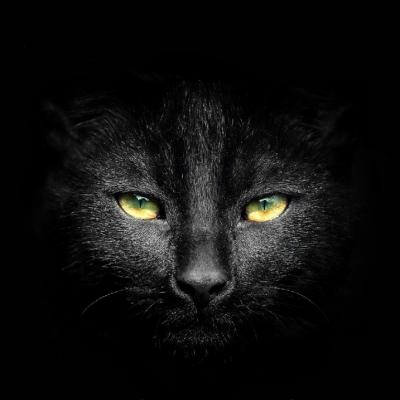 In the pantheon of eldritch tales, penned by that most eminent and enigmatic of authors, Howard Phillips Lovecraft, there exists a lesser-known yet profoundly evocative short story, entitled "Memory." This brief yet potent piece, first published in the May 1923 issue of The National Amateur, bears witness to the unyielding decay of time and the irrevocable erosion of civilization. As is the solemn duty of any devoted chronicler of Lovecraft's oeuvre, I shall strive to analyze this enigmatic work, with due reference to the esteemed scholars who have preceded me, and to situate it within the context of Lovecraft's broader literary legacy.
In the pantheon of eldritch tales, penned by that most eminent and enigmatic of authors, Howard Phillips Lovecraft, there exists a lesser-known yet profoundly evocative short story, entitled "Memory." This brief yet potent piece, first published in the May 1923 issue of The National Amateur, bears witness to the unyielding decay of time and the irrevocable erosion of civilization. As is the solemn duty of any devoted chronicler of Lovecraft's oeuvre, I shall strive to analyze this enigmatic work, with due reference to the esteemed scholars who have preceded me, and to situate it within the context of Lovecraft's broader literary legacy.
"Memory" unfolds within a dream-like, desolate landscape, reminiscent of the once-majestic realms described in Lovecraft's other tales, such as "The Doom That Came to Sarnath". In this barren, ancient realm, the very essence of memory takes corporeal form, as two supernatural beings - a Daemon and a Man - engage in a dialogue of haunting significance. The Daemon, a timeless entity, offers an account of the now-ruined city of Zeth, whose annals are preserved only in the vestiges of a bygone era. The Man, representative of the transient and mortal nature of humanity, is rendered mute by the immensity of this lost history.
The tale's brevity belies its depth and thematic resonance. Lovecraft employs his characteristic use of archaic language and vivid description to evoke an atmosphere of cosmic despair and melancholy, as seen in his more celebrated works, such as "The Colour Out of Space" and "The Shadow Over Innsmouth". "Memory" serves as a testament to the ephemerality of human existence and the inexorable march of time, which ultimately consigns all civilizations to oblivion.
While "Memory" lacks the explicit encounters with malevolent cosmic entities found in Lovecraft's longer works, it serves as an example of how the author's thematic preoccupations with the decay of civilizations and the insignificance of human achievement are present even in his briefest of narratives. The story's thematic resonance and evocative setting make it an intriguing addition to Lovecraft's oeuvre, despite its brevity.
In conclusion, "Memory" stands as a poignant and haunting vignette, suffused with the melancholic grandeur and cosmic despair that permeate Lovecraft's more extensive works. Through the discourse between the Daemon and the Man, Lovecraft masterfully explores the fragility of human knowledge and the inexorable decay of even the mightiest civilizations. As a representative example of Lovecraft's shorter works, "Memory" offers the reader a succinct and potent distillation of the themes and motifs that characterize his oeuvre.
Bibliography:
- Burleson, Donald R. "H.P. Lovecraft: A Critical Study." Greenwood Press, 1983. ISBN: 978-0313232558.
- Harman, Graham. "Weird Realism: Lovecraft and Philosophy." Zero Books, 2012. ISBN: 978-1780992525.
- Joshi, S.T. "A Subtler Magick: The Writings and Philosophy of H.P. Lovecraft." Wildside Press, 1996. ISBN: 978-1880448618.
- Joshi, S.T. "The Weird Tale." University of Texas Press, 1990. ISBN: 978-0292790575.
Further Reading:
- Cannon, Peter. "Lovecraft Remembered." Edited by Peter Cannon, Arkham House Publishers, 1998. ISBN: 978-0870541738.
- Houellebecq, Michel. "H.P. Lovecraft: Against the World, Against Life." Believer Books, 2005. ISBN: 978-1932416183.
- Klinger, Leslie S., ed. "The New Annotated H.P. Lovecraft." Liveright Publishing Corporation, 2014. ISBN: 978-0871404534.
- Lovecraft, H.P. "The Annotated Supernatural Horror in Literature." Edited by S.T. Joshi, Hippocampus Press, 2000. ASIN: B00DSGRJS4.
- Schultz, David E., and S.T. Joshi. "An H.P. Lovecraft Encyclopedia." Hippocampus Press, 2001. ISBN: 978-0974878911.
Note: The works of H.P. Lovecraft are in the public domain.
Memory
By H. P. Lovecraft
In the valley of Nis the accursed waning moon shines thinly, tearing a path for its light with feeble horns through the lethal foliage of a great upas-tree. And within the depths of the valley, where the light reaches not, move forms not meet to be beheld. Rank is the herbage on each slope, where evil vines and creeping plants crawl amidst the stones of ruined palaces, twining tightly about broken columns and strange monoliths, and heaving up marble pavements laid by forgotten hands. And in trees that grow gigantic in crumbling courtyards leap little apes, while in and out of deep treasure-vaults writhe poison serpents and scaly things without a name.
Vast are the stones which sleep beneath coverlets of dank moss, and mighty were the walls from which they fell. For all time did their builders erect them, and in sooth they yet serve nobly, for beneath them the grey toad makes his habitation.
At the very bottom of the valley lies the river Than, whose waters are slimy and filled with weeds. From hidden springs it rises, and to subterranean grottoes it flows, so that the Daemon of the Valley knows not why its waters are red, nor whither they are bound.
The Genie that haunts the moonbeams spake to the Daemon of the Valley, saying, “I am old, and forget much. Tell me the deeds and aspect and name of them who built these things of stone.” And the Daemon replied, “I am Memory, and am wise in lore of the past, but I too am old. These beings were like the waters of the river Than, not to be understood. Their deeds I recall not, for they were but of the moment. Their aspect I recall dimly, for it was like to that of the little apes in the trees. Their name I recall clearly, for it rhymed with that of the river. These beings of yesterday were called Man.”
So the Genie flew back to the thin horned moon, and the Daemon looked intently at a little ape in a tree that grew in a crumbling courtyard.






